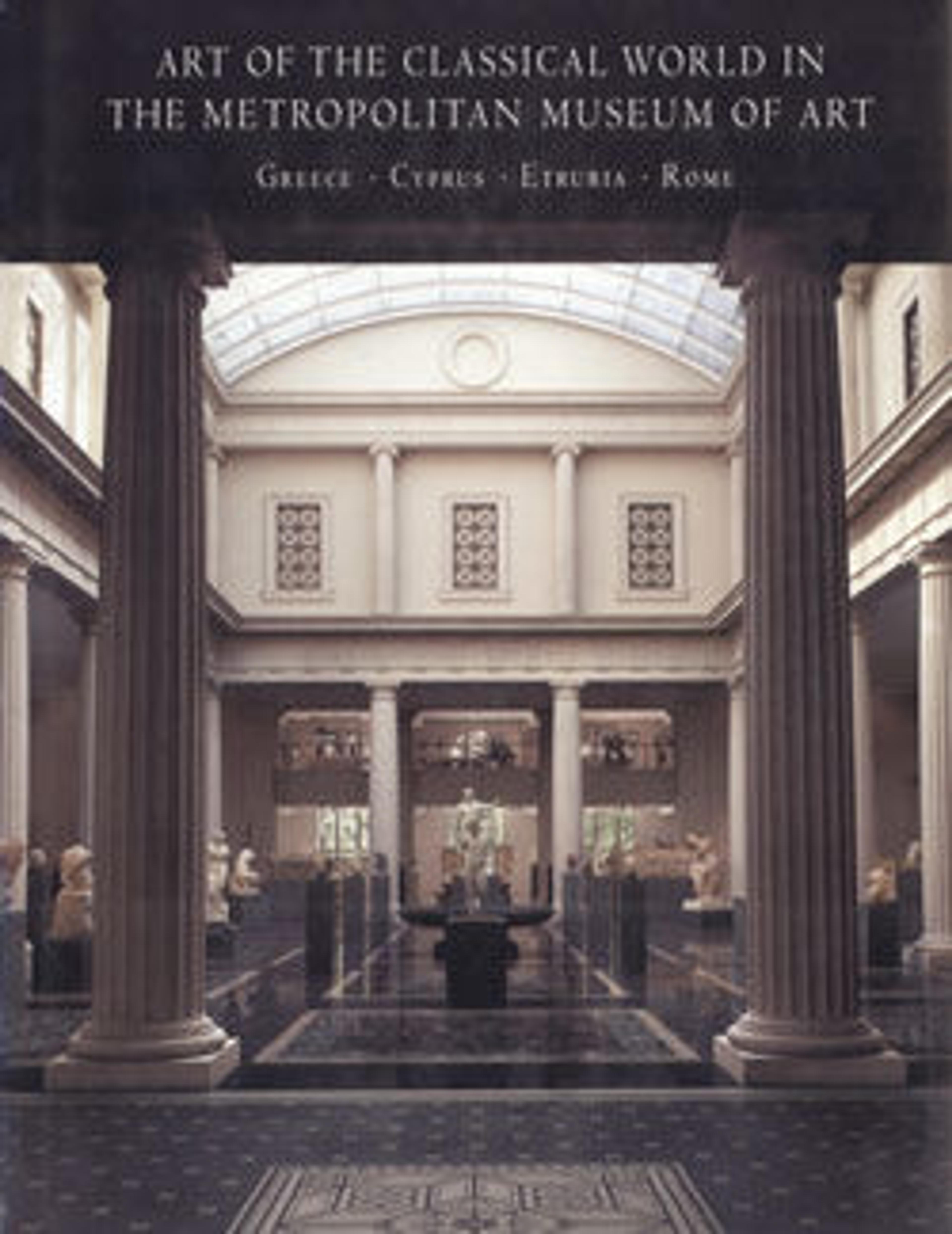Bronze statuette of Hermes
Hermes—messenger of the gods, the cattle rustler, the inventor of the lyre, the guider of souls across the River Styx, the manly god of boundaries—stands gracefully here rather than moving purposefully. He likely originally held his kerykeion (herald's staff) in his left hand. A pair of wings are strapped to his feet, and the small rectangular cuttings at the top of his head once held wings that sprang from his laurel-crown. The eyes, once inlaid with silver, glass paste, or stone, would have added vitality to the figure.
The lack of interest in the specific delineation of the anatomy and the listless elegance of the pose attest to the decorative quality of this highly refined bronze. It is a sophisticated work, executed in a mannered, classicizing style that sets the god apart from the mundane world of the statuette's human owner and invites contemplation of the divine.
The lack of interest in the specific delineation of the anatomy and the listless elegance of the pose attest to the decorative quality of this highly refined bronze. It is a sophisticated work, executed in a mannered, classicizing style that sets the god apart from the mundane world of the statuette's human owner and invites contemplation of the divine.
Artwork Details
- Title: Bronze statuette of Hermes
- Period: Late Hellenistic or Early Imperial
- Date: 1st century BCE–1st century CE
- Culture: Greek or Roman
- Medium: Bronze
- Dimensions: H. 11 7/16 in. (29.1 cm)
- Classification: Bronzes
- Credit Line: Rogers Fund, 1971
- Object Number: 1971.11.11
- Curatorial Department: Greek and Roman Art
More Artwork
Research Resources
The Met provides unparalleled resources for research and welcomes an international community of students and scholars. The Met's Open Access API is where creators and researchers can connect to the The Met collection. Open Access data and public domain images are available for unrestricted commercial and noncommercial use without permission or fee.
To request images under copyright and other restrictions, please use this Image Request form.
Feedback
We continue to research and examine historical and cultural context for objects in The Met collection. If you have comments or questions about this object record, please contact us using the form below. The Museum looks forward to receiving your comments.
